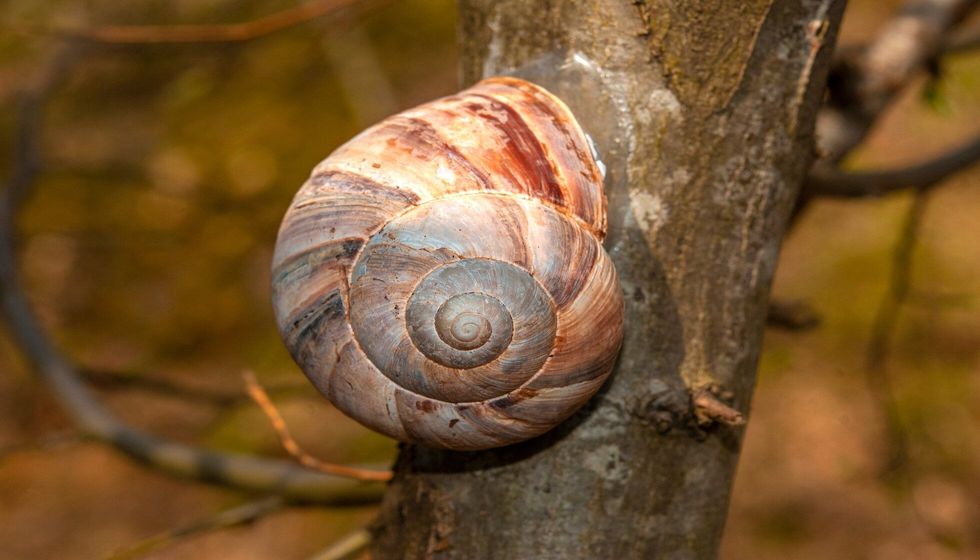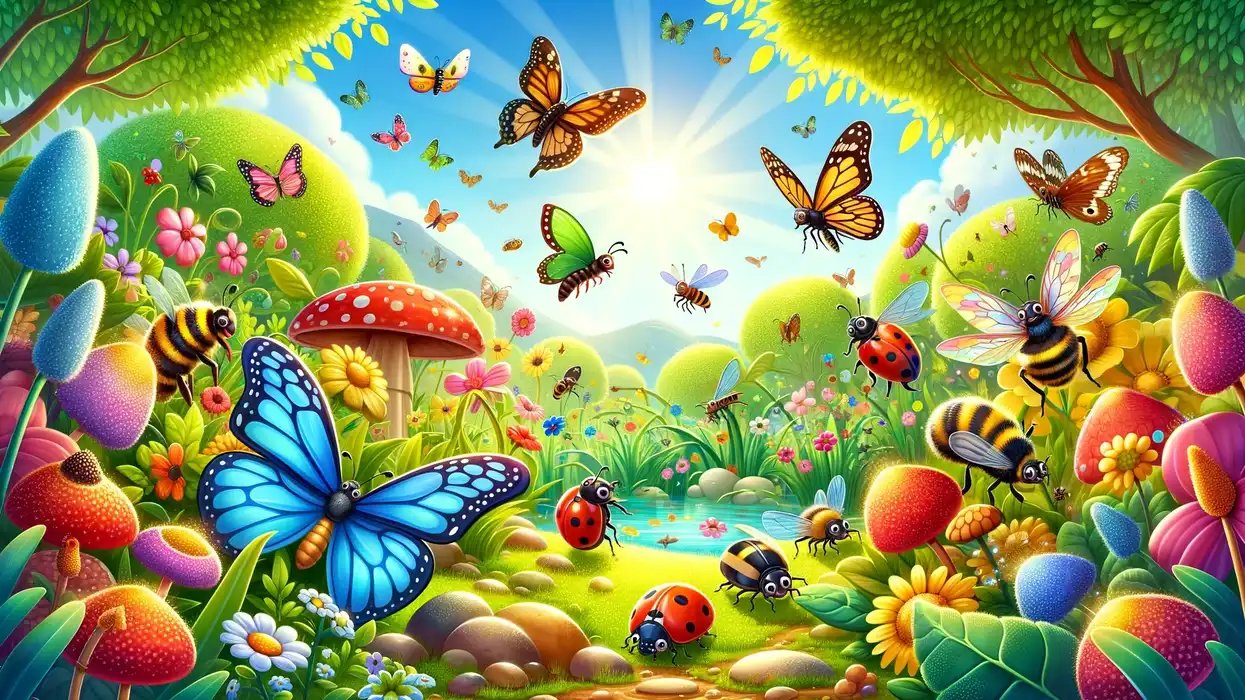Shells are the exoskeletons of shelled creatures like clams, snail species, turtles, mollusks, various crab species like the hermit crab, and the like which are predominantly found on a beach.
Shells are mostly composed of calcium carbonate and contain a small volume of protein which is not greater than two percent and have layers. Unlike common animals, shells are not composed of cells.
When it comes to marine animals with shells, they comprise a mantle tissue that is found underneath them and is used to produce minerals and proteins to create the shell extracellularly.
Hence, seashells grow from underneath towards the upper layer, or by combining matter towards the rims. Some land-dwelling animals like land snails and armadillos also have protective shells.
Since these shelled creatures do not shed their shells or exoskeleton, their shells grow so that they can accommodate their body growth. This growth pattern makes three distinctive layers of shell which are called the outer proteinaceous periosteum which is not calcified, the middle prismatic layer which is calcified, and an inner calcified pearlescent layer of the nacre.
Shells come in various shapes like a spiral, flat, and also in various sizes and are quite popularly collected as souvenirs from the beach.
In this article, you will find a detailed explanation about the function of the shell on shelled creatures, what they are made of, and also about shell structure and creatures bearing external shells, including animals like turtles and tortoises, crabs like hermit crabs, bivalves, snails, and snail shells, shelled species like armadillos, mussels, mollusks, seashells, clam, scallops.
If you liked our article on animals species with a shell, you will also like similar articles like Wood Turtle Facts and armored animals.
In what era did animals with shells first appear?
The first animals with shells appeared 520 million years ago.
Cloudina is known to be one of the first known animals in the world, with a hard exoskeleton or a shell.
Their fossils have been discovered all over the world, and have also probably resulted in building the oldest reefs. Most marine animals with shells probably evolved from the cloudina.
What are animals with shells called?
Animals with shells are called by many names such as mollusks, which is inclusive of shelled animals found on beaches and the sea, crustaceans which include all crabs and lobster species, armadillos, and tortoises.
Shells are the protective exterior coating or the exoskeleton, which is created by the secretions produced by the soft mantle of certain animals like sea creatures such as mollusks, chiton, hermit crabs, turtles, snails, the armadillo, and the like.
For sea creatures, its core function is to absorb the chemicals and the salt from the water the surrounds it and with enough of the right components, these creatures form a hard substance which is called calcium carbonate which is what healthy seashells are made of.
Strong, healthy seashells mostly comprise calcium carbonate like eggshells. For most shelled creatures, the shell is a part of their body, but is not alive and is similar to the existence of nails and hair on a human body.
Mollusks produce their shells through secretions within their body, but their shell is not alive.
After a mollusk dies, their shell is left behind but is still important as they provide shelter and protection for small fish species and hermit crab species, birds.
They usually can have various colors but is unknown where the color is actually from but it is a popular belief that they get their colors from their tropical diet or even the environment.
What is the function of shells in animals?

We tend to think that an animal’s shell is almost like a house that is conveniently portable, but it has more functions than just what meets the eye. They have several uses like helping the animal protect themselves from predators, protecting their inner organs, shelter from natural forces like wind, rain, and the sun.
All in all, it predominantly helps them to move around safely in their environment.
Each animal, however, is known to use shells in different ways. Mammals with shells like Armadillos use their tough and thick armored shell to dig deep in the sand, and build their homes underground and stay protected from being preyed upon.
Mollusk shells cover them completely to keep their soft bodies safe on the ocean floor. Shellfish like lobsters and crabs usually let algae and plants grow on their shell, which acts as camouflage against predators.
The turtle shell possesses a carapace which is the top and the plastron which is the bottom. Both the plastron and the carapace are bony formations that are joined together.
The shell of this species of tortoises acts as a shield for their ventral and dorsal parts and protects their vital organs as well as their legs and heads in some cases.
The shell of turtles is made up of modified bony parts like parts of the pelvis, ribs, and other bones. The turtle shell's bone is made up of dermal as well as skeletal bone, which acts as armor to the rib cage.
Not only does the turtles' shell provide them shelter and protects them from predators but is also an important aspect to identify them.
Corals are formed when coral larvae that swim freely in the ocean get attached to rocks or other hard surfaces submerged on the ocean floor along the shores of continents and tropical islands. When the coral grows and expands, three significant and distinctive structures are formed, that is, the fringing, the barrier, and the atoll.
The Fringing is the most common type of reef, that forms towards the sea directly from the shore. The Barrier reefs are similar to the fringing but form at a greater distance.
They often have a lagoon of open water between the shoreline and the reef. Atolls are formed when the fringing reef is formed encompassing a volcanic island that sinks entirely under the sea and the coral proceeds to develop upward. They are usually rounded or oval and are characterized by a lagoon at the center.
When did the first marine animals with shells appear?
The first marine animal with a shell was first discovered by Geologist, John Moore, who analyzed fossils that they extracted from rocks collected from the Shaanxi Province in China.
After much study, it was found out that the fossil belonged to the first animals known to possess shells and were Cambrian creatures from the ocean known as Cambrothyra. As per the studies based on the fossil, they measured some centimeters in length and were known to exist about 520 million years ago.
According to the research, Moore drew the conclusion that these animals appeared to be larger than what was previously presumed.
Other Facts About Animals With Shells
A majority of animals in the world with shells are sea-based and come in different sizes and shapes. It is common to come across seashells that are home to several sea animals that protect them from the environment.
All sea invertebrates possessing seashells are collectively called mollusks and they include mussels and clams. The hard shells of mollusks are positioned on their hump and are responsible for protecting their internal organs.
Shellfish are also used for harvesting calcium carbonate. The shells are first cleaned using 2 M HCl and then left to dry under the sun for a day. They are further calcined for five hours at 900°C (1652°F).
Crustaceans or marine arthropod species predominantly consist of hermit crabs, lobsters, and shrimps and are known to possess an external shell that is made up of a protein known as "chitin" and calcium.
Sea urchins are a species known to possess a shell, which is called "test." The appearance of the shell is different between males and females.
The male sea urchins possess a good-looking shapely design which mainly is used for attracting the female sea urchins. Their shells are hard, rigid, and comprise flattened, calcareous ossicles which are connected with each other and are separated into ten different sections.
These sections have approximately a number of five ambulacral plates, which are characterized by the pierced holes from where the tubular feet stick out. The other plates which remain without the pierced holes are known as the interambulacral areas.
Armadillos are land-dwelling creatures with a protective casing around their bodies that act as armor. They are related to the animal family of sloths and anteaters.
Armadillos come close to being creatures with shells, but according to studies, they are not exactly covered with shells.
Their body is encased with bony plates with which their backs, heads, and tails are covered and provided with the same protection.
Armadillos are known to be the only mammals that possess a unique shell structure of bony carapaces and a subspecies of the armadillo family known as the three-banded armadillo can protect itself by curling up inside their outer covering.
The chambered nautilus is practically a living fossil that is widely recognized for its beautiful and elaborate shell, which usually comes in white and pink colors. However, it is because of this characteristic feature that they are made a target of ruthless marketing leading to their dwindling numbers in the world.
Here at Kidadl, we have carefully created lots of interesting family-friendly facts for everyone to enjoy! If you liked our suggestions for Do You Know All The Animals With Shells?
What Are Shells Made Of? then why not take a look at Cute Baby Farm Animals Names And Pictures For Nursery Kids, or How Is Ice Cream Made? Explore All Cool Facts About Ice Cream Making.










